Scott #292 is the second highest denomination of the 1898 Trans-Mississippi Exposition Issue, released to mark the exposition in Omaha, Nebraska.
This series aimed to portray key aspects of western settlement, agriculture, and industry through engraved designs. The one-dollar denomination, titled Western Cattle in Storm, was created not only to serve a postal function but also to represent the full scope of the exposition’s theme.
While lower denominations addressed everyday correspondence, the one-dollar value was dedicated to covering heavy parcels, high-value mailings, and international transactions.
Over time, it has also come to be regarded as the most beautiful stamp ever created by the United States Post Office, a reflection of its powerful design, technical engraving, and aesthetic presentation unmatched in American philately.
Design & Print
Produced in 1898 by the Bureau of Engraving and Printing, Scott #292 was printed in black ink, making it the only monochrome stamp in the Trans-Mississippi series. The central vignette, based on a painting by Scottish artist John A. MacWhirter, depicts a herd of cattle struggling through a violent storm. The choice of subject and the stark black engraving gave the stamp a dramatic quality that distinguished it from every other denomination in the set.
The inscription “United States of America” is positioned at the top, with “One Dollar” spelled out across the bottom in a bold tablet. While production numbers were limited compared with lower values, they were sufficient to satisfy postal demand for high-denomination usage.
The engraving demonstrated the Bureau’s highest technical skill, with detailed linework capturing movement in the cattle, texture in the storm, and a sense of depth that has contributed to its reputation as the most beautiful stamp ever issued by the U.S. Post Office.
Postal Usage
The one-dollar denomination was primarily intended for substantial postal charges, both domestically and internationally. It was applied to parcels, multi-ounce mailings, and registered items requiring high-value franking. For international services, it covered heavy shipments or combined fees under Universal Postal Union standards.
It was also frequently paired with other denominations to reach exact postage for business and commercial correspondence. By issuing this high-value stamp within the Trans-Mississippi series, the Post Office Department ensured the set’s functionality across the complete rate structure in force during 1898, not only for ordinary correspondence but also for the heaviest and most complex postal services.
Identification
Scott #292 is identifiable by its black coloration, horizontal layout, and the vignette titled Western Cattle in Storm. The engraving depicts a herd of cattle braced against high winds, a design unmatched by any other U.S. issue of the period.
The denomination “One Dollar” is spelled out across the bottom, following the typographic style of the entire Trans-Mississippi set. The stamp is perforated 12, consistent with Bureau of Engraving and Printing issues of the late nineteenth century.
Collectors and specialists confirm authenticity by examining the fine linework in the cattle and storm clouds, which are defining characteristics of this issue. Its unique design, large denomination, and technical engraving quality—combined with its dramatic visual impact—are central to why Scott #292 is consistently described as the most beautiful stamp ever produced by the United States Post Office.
It’s design was reissued in 1998 commemorating the 100 year anniversary of the Trans-Mississippi stamp set. The 1998 issue can be distinguished by it’s bi-color printing where the vignette is black, versus the 1898 issue was printed in one color.

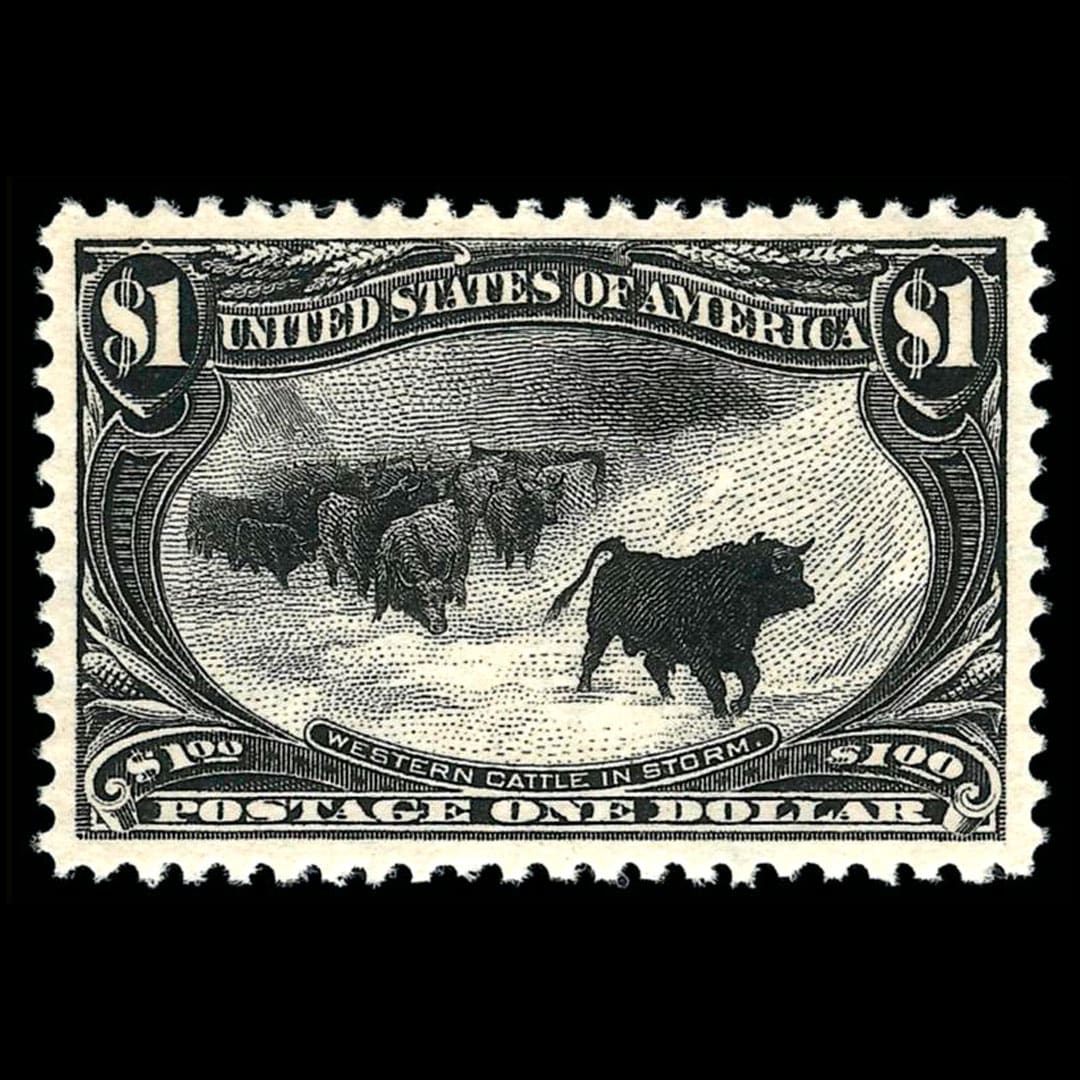

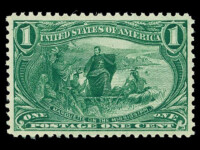
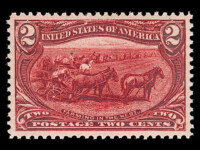



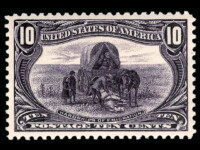

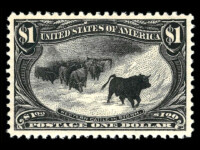













Ask A Question Or Leave A Comment